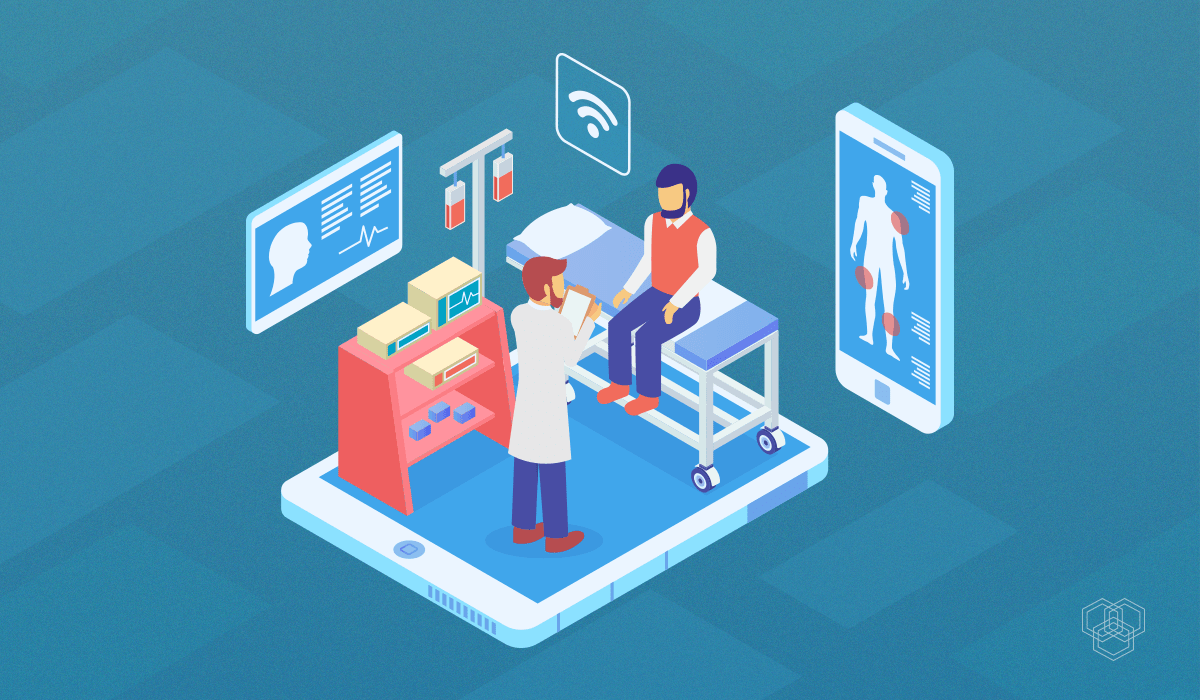Telenurse is a branch of telehealth. Telehealth is virtual and comprises indirect visits between patients and clinicians via communications median technology. It is also known as telehealth.
Telenursing requires genuine nursing and patient interaction via telecommunication. It uses electromagnetic channels such as wire, radio, and video communication signals.
Telenurse or virtual nurse monitors and observes the patient’s vital signs and symptoms.
The applications that have changed the healthcare
- Robotic surgery
- Virtual nursing assistant
- Preliminary diagnosis
- Administrative workflow
- Connected machines
- Fraud detection
- Dosage error detection
- Cybersecurity
- Clinical trial
- Automated image diagnosis
Telenursing examples
- Internet support device
- Phone
- Remote telemonitor
- An interactive and associated video
The technology used for Telenursing
- Computers (laptops and desktops)
- Telephone
- Point-to-point connections
- Network programs
- The connection between the monitoring center
- Wireless network
- Software programs
- Telemonitoring sensors
- Nurse informatics
Types of Telenursing
- Remote monitoring: The nurse monitors and observes the patient remotely. The patient gathers and transfers the data to the nurse. The nurse plans the medications and interventions. This is especially used for handling chronic diseases and heart diseases.
- Interactive telenursing service: In this, there are interactive sessions between the nurse and the patient. This is used for gathering and obtaining the patient history, physical test, and assessment.
- Store and forward telenursing: It is used to get the medical image, audio, and video data sent to the nurse at the appropriate time.
- Specialist and primary care consultants: In this, patients can see the nurse in a video connection. Afterward, patients can consult specialists.
- Imaging services: Used in radiology, pathology, and cardiology.
Application of telenursing
- Home healthcare
- Patient guide
- Remote monitoring system
- Chronic disease management
Responsibilities of Telenursing in healthcare
- The virtual nurse is a Caregiver.
- Virtual nursing act as Coordinator and organizer.
- Virtual nursing is Collaborator and assistant.
- Virtual nursing promotes Health educators and instructors.
- Virtual nursing serves as a Consultant or advisor.
- Virtual nursing act as a Counselor.
- Virtual nursing is a Case Manager.
- Virtual nursing appears as a Social
- Virtual nursing is also a Researcher
- Virtual nursing is also Recreationist
- Virtual nursing is highly interactive
- Virtual nursing provides First aid certification
- Virtual nursing promotes Scheduler compliance and flexibility
- Virtual nursing is mentally sharp and active
- Virtual nursing is Compassionate to patient needs
- Virtual nursing provides ways to be physically strong
Its services
Improved quality of care
The virtual nurse has also improved and upgraded the quality of care. Telenursing has provided a platform through which patients can interact and engage in an improved way, thus becoming aware of their health.
Saves money
The virtual nurse has lessened the cost for both patients and practitioners. Due to the fewer number of hospital visits and hospitalizations, the hospital becomes less crowded. In this way, the hospital admits the patient that needs help on an emergency basis.
Patient’s support and comfort
Patient’s comfort and support is really important. Virtual nurse gives the assurance that someone is watching over their health and well-being daily. Patients feel more comfortable by communicating with a nurse via the internet.
Helps patients in remote areas
The virtual nurse helps the patients in remote areas as it is sometimes difficult for people to travel and get hospitalization. So virtual nurses can help these people and can provide services as well.
Education, feedback, and support
It builds a relationship between the patients and the caregivers. The virtual nurse provides the patient with the kind of education, support, and feedback a patient needs.
Advanced and Improved patient lifestyle
Virtual nurse improves and upgrades the lifestyle of patients. The virtual nurse allows the patient to spend more time in their homes rather than in hospitals.
A virtual nurse can also inform patients about their health. They also update and inform them when they need to apply for an emergency.
Motivate patients to improve their health
Virtual care also motivates patients to improve their health conditions and identify factors that can worsen their health status.
Remote service delivery
Remote Patient monitoring is a program designed to control and coordinate with the patient virtually. Remote patient monitoring programs have the power to lessen the overall healthcare cost and hospital readmissions. Basically, it emphasizes the patient-generated data from home through mobile health platforms. Then it connects to the caregiver team.
The data can be sent to the caregiver without the involvement of the patient. A caregiver can keep track of the patient round the clock, gather data on health activity, diet, and exercise. A caregiver uses this program also to get care management tips and health advice.
Remote Patient Monitoring is of significant guidance and support as it helps the patients and healthcare professionals.
Remote Patient monitoring is not just accessible for the patients depending on their location and the remote access. Beyond that, the nurse has to attempt to engage with the patients and encourage them to use the Remote Patient Monitoring platform.
Virtual healthcare technology empowers nurse practitioners (NPs) to provide medical services and benefits with the Internet and landline phone equipment. Nurse Practitioners provide services and benefits using various tools such as computers, remote monitoring devices, cellular devices, delivery companies, and surgical robots.
Virtual nurse combines audio, video and text-based digital data and information. Virtual health tools enhance and boost efficiency for nurse practitioners who provide service to clients in rural communities and poorly populated areas.
Virtual nurse practitioners also monitor and observe the health conditions of patients constantly. For this, Virtual nurse practitioners engage peripheral devices that replace typical medical devices such as stethoscopes, thermometers, and blood pressure cuffs.
Initial detection and improved outcomes
The virtual nurse can improve and upgrade the outcomes by allowing constant monitoring and observation. This can be very useful for diagnosis.
Extension in healthcare employment opportunities
Telenursing has also increased employment opportunities in healthcare. Telehealth is a way of saving cost and transfers top-level services at meager rates.
Patients follow appointments to accomplish data and information from caregivers within no time. Research has shown that health care improvement will cause telemedicine consultations to double by 2022.
Drawbacks of Telenursing
Following are some of the drawbacks of telenursing
- Decreases face-to-face interaction between the nurse and the patient
- It may enhance liability
- Security issues
- Confidentiality issues
Some legal issues with Telenursing
Legal issues with telenursing include:
- Patient privacy
- Verifying consent and approvals
- Advance maintenance of compliance with the scope of practice
- Nursing licensure across society
Ethical concerns
- Avoid harm and loss to patients
- Maintaining patient’s principles and integrity
- Maintaining freedom and self-determination
Conclusion
Telenurse/Virtual nurse is a great help in the healthcare system. Telenursing is one of the most innovative, upgraded, enhanced, and improved techniques of promoting nursing care that greatly influences the registered nurses and enhances their capability to practice nursing in a new way.
It has evolved a tremendous deal in the past few years, and it keeps on growing. It has become an important and essential part of many healthcare systems.
Many things still need enhancement and can contribute more towards the assistance required to better healthcare systems. We can hope for a bright future in virtual nurse as it has a lot to offer.
Inspired by: Advent Health




Share Your Thoughts